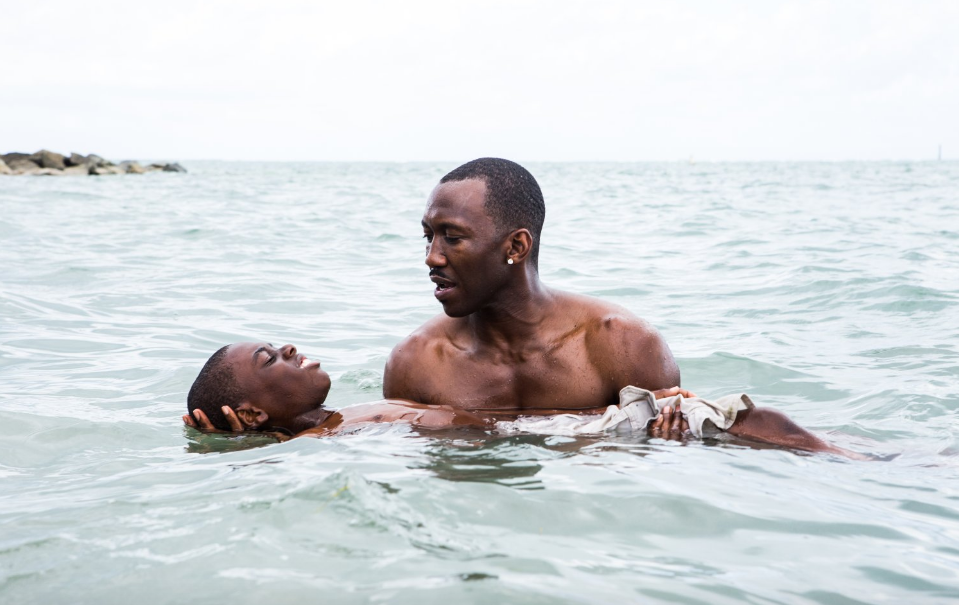Moonlight is unlike any other film you’ll likely see in a mainstream theater. Amid a sea of sequels and remakes, its screenplay is thrillingly original. The 110-minute film explores masculinity and sexuality with tenderness and tact, abandoning coming-of-age-story tropes for the ambiguity and complexity of real life. Well acted, uniquely written, and visually stunning, Moonlight deserves every bit of the Oscar hype it’s been receiving.
The film is broken into three chapters following Chiron, an African American boy, through childhood, adolescence, and young adulthood. As he ages, he struggles with the expectations of masculinity and questions about his own sexuality, simultaneously dealing with childhood bullies and a drug-addicted single mom.
Though much of the film is tense with a feeling of imminent danger, there are very few scenes of physical violence. By avoiding the gratuitous fight scenes that often plague movies with young male protagonists, Moonlight allows the tension to build without an outlet for most of the film. When violence finally breaks out, then, it has an especially explosive power.
The film is divided into three chapters, but it never feels disjointed or episodic. The three actors who play Chiron maintain a continuity of character, capturing his timidity with expressive eyes and similar patterns of motion. They capture the evolution that occurs at each stage of his life with similar subtlety, with Alex Hibbert, Ashton Sanders, and Trevante Rhodes putting in amazing performances as childhood, teen, and adult Chiron, respectively. Because Chiron doesn’t speak often and has no drawn-out monologues, each actor has to convey his quiet intensity through their faces and bodies—and they rise to the challenge with sensitivity and skill.
Somehow, director Barry Jenkins and writer Tarell McCraney manage the time leaps between each stage of Chiron’s life with grace. Instead of awkward, expository monologues or explicit re-tellings of what’s happened for the past several years, major events are implied in dialogue or suggested by costume and setting. We find out Chiron’s mother is in rehab in chapter iii, for example, by the “visitor” sticker on his chest in one scene. There are moments where, because there’s so little explicit information given, aspects of the plot can seem glossed over or confusing. Instead of dwelling on this, though, the film revels in ambiguity and trusts the audience to reach many conclusions on their own.
From a visual perspective, this film is art. Expert camerawork captures a variety of perspectives, at times circling characters to capture interactions from every angle, at other times offering only a narrow view of the surroundings. An attentive use of color turns Miami into an almost surreal dreamscape of rich blues and yellows. Red and blue appear throughout the film as emotionally evocative motifs.
This attention to beauty, form, and theme also appears in the minimalistic use of score. This movie embraces silence, heightening the tension of each scene and allowing the actor’s phenomenal performances and stunning visuals to have the fullest impact possible. Whenever music enters the picture, it perfectly complements and magnifies the drama of the scene—foreboding rises to terror and tragic moments become heartbreaking.
With incredible artistic sensibility and subtle, powerful acting performances, Moonlight makes visible the too-often overlooked struggles of poor, African American, LGBT+ youths. It explores intersectional identity questions without preachy monologues or oversimplified solutions. It’s a coming-of-age tale that defies convention.





